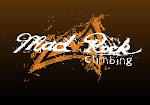As we continue to be flooded with the dearth of internet climbing videos showcasing one's ability to crank hard, I felt compelled to give my perspective into the meaningfulness of Bruce's American Fork Project, especially as we come face to face with the consequences of climbing's growth. To bring some context into this perspective, I'm gonna start with a little introduction about my initiation into climbing and my cumulative experience climbing in American Fork Canyon.
I first got into climbing in 1997 while I was still in college. I was addicted to climbing, couldn't wait to launch a full-fledged assault onto any climbing wall I could get my hands on, and always hungry for the latest issue of Climbing or RockandIce cos those were my only sources of paparazzi news from across the pond. This was way back in the day, way before online climbing sites and blogs.

The stuff about climbing in North America was my source of inspiration and climbers like Boone Speed, Alan Watts, Scott Franklin, Jeff Webb, Dale Goddard, John Bachar, Lynn Hill, Todd Skinner, Robyn Ebersfield, just to name a few, were the stuff of legend. All the hype was about Smiths Rock, City of Rocks, Logan Canyon, Charleston, Potosi and of course American Fork. So imagine my excitement when I finally made my way across the Pacific for school at the U here in Utah!
When I first got to Utah, Jeff Webb gave me a tour of American Fork. We've met many years before when Jeff was a professor at the National University of Singapore, so it was a treat to have a local and a person involved in the progression of America's climbing, give me a personal tour of American Fork. As he went on pointing out the climbs at the different sections around the canyon, I could only marvel at the beauty and serenity of the forest and in awe of being at the base of some of the America's test-pieces. Well...ONCE UPON A TIME, America's test-pieces. As I spend the next couple of years climbing in American Fork, I began to realize that each climbing area and its climbing community inevitably become part of climbing's progression. As I spend most days with my wife mostly alone climbing at some sectors of American Fork, it's strange to imagine the hype it once received. Gordon Douglas, who was one of the early developers of the area, related to me that when the Hell Cave sector first went up, there were easily a congregation of 60 climbers. In contrast, it's mostly just me, my wife, with Gordon and Mindy this season. I guess this is exactly how crags are in the progression of the sport...the most hyped up places, the test-pieces of today, will become the warm-ups of the future and the chosspiles of yester-years. Nevertheless, we're grateful for all the pioneering effort, for if it wasn't for those dedicated few willing to equip the canyon, we wouldn't have such a privilege to enjoy such a sport and environment.
This brings us back to Bruce's documentary. Here, we have a guy who's passionate about showcasing American sport climbing pioneering history and what a climbing community truly is. It's simply about a community of everyday people, with day jobs, with classes to take in school, with kids, with dogs, with a spectrum of climbing abilities, getting down to their local crag at the start, middle or end of the day and simply roping up and having a great time. You're not gonna find a climbing flick flashing exotic locations, rock jocks pumped full of testosterone, takedowns of 5.15s and V16s, or 5.14 onsights. Even if there are, these feats will fall victim to the progression of climbing and become forgotten classics and warm-ups for the future generation.
So if you're one who thinks that American Fork is just a chosspile and that you're better off cranking at some exotic Euro destination, you may be right or you just may be a rock-snob...so until the day I have the money or time to travel to some far out destination, American Fork Canyon will always remain my favorite chosspile.








I like your thoughts Chee Hoi! The quantity of rock to be climbed out there will always leave some people really picky about the quality. True with beer, coffee, and climbing. Bruce is my cousin, and the one who first got me into climbing. I'm glad that I've had the opportunity to have you as a teacher in school, and as a friend in the climbing community. It's great to have people around you that can always raise the level of excitement for climbing.
ReplyDeleteI'm glad that you get to come full circle in the progression of climbing, first as the inspired and now as the inspirer. Even cooler is that this happens around a piece of history as epic as American fork canyon. It's good to remember that when we think of a place as "sub-par" it's really just our attitude that is such. it makes me think that it's good riddance to the climbers who are too good climb at the local crag for want of better quality, they're just a drain on the energy level, and a waste of good oxygen.
Well kudos none the less, and I am excited to see the final product!
Hey Mike,
ReplyDeletethanks for dropping in! Great to hear from you and it's crazy how small the world is! Can't believe Bruce's your cousin.
Anyway, hope you're enjoying your own piece of rock where you are and great job on those muscle-ups!